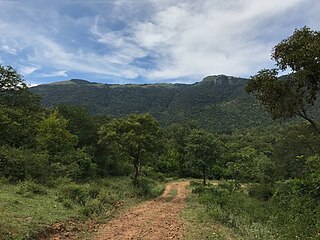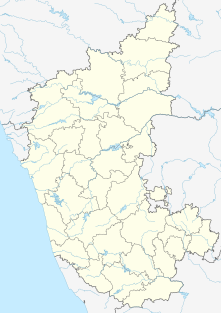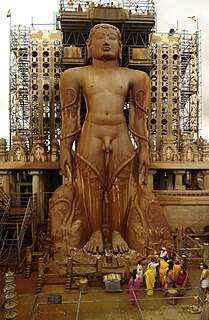Related Research Articles

Ooty, officially known as Udagamandalam, is a town and a municipality in the Nilgiris district of the Indian state of Tamil Nadu. It is located 86 km north of Coimbatore and 128 km south of Mysore and is the headquarters of the Nilgiris district. It is a popular hill station located in the Nilgiri Hills. Local residents call it Queen of Hills. It was the summer capital of Madras Presidency.

The Western Ghats aka Sahyadri is a mountain range that covers an area of 160,000 km2 (62,000 sq mi) in a stretch of 1,600 km (990 mi) parallel to the western coast of the Indian peninsula, traversing the states of Tamil Nadu, Kerala, Karnataka, Goa, Maharashtra, and Gujarat. It is a UNESCO World Heritage Site and is one of the eight hotspots of biological diversity in the world. It is sometimes called the Great Escarpment of India. It contains a very large proportion of the country's flora and fauna, many of which are only found in India and nowhere else in the world. According to UNESCO, the Western Ghats are older than the Himalayas. They influence Indian monsoon weather patterns by intercepting the rain-laden monsoon winds that sweep in from the south-west during late summer. The range runs north to south along the western edge of the Deccan Plateau, and separates the plateau from a narrow coastal plain, called Konkan, along the Arabian Sea. A total of thirty-nine areas in the Western Ghats, including national parks, wildlife sanctuaries and reserve forests, were designated as world heritage sites in 2012 – twenty in Kerala, ten in Karnataka, six in Tamil Nadu and four in Maharashtra.

The Biligirirangana Hills, commonly called BR Hills, is a hill range situated in south-western Karnataka, at its border with Tamil Nadu in South India. The area is called Biligiriranganatha Swamy Temple Wildlife Sanctuary or simply BRT Wildlife Sanctuary. It is a protected reserve under the Wildlife Protection Act of 1972. Being at the starting point of the Eastern Ghats and very close to Western Ghats, the sanctuary is home to eco-systems that are unique to both the mountain ranges. The site was declared a tiger reserve in January 2011 by the Karnataka government, a few months after approval from India's National Tiger Conservation Authority.

Kodachadri is a mountain peak with dense forests in the Western Ghats in South India, 78km from Shimoga. It is declared as natural heritage site by the Karnataka Government. and it is 13th highest peak of Karnataka.

Ghat, a term used in the Indian subcontinent, depending on the context could refer either to a range of stepped hills with valleys, such as the Eastern Ghats and Western Ghats; or the series of steps leading down to a body of water or wharf, such as a bathing or cremation place along the banks of a river or pond, the Ghats in Varanasi, Dhobi Ghat or the Aapravasi Ghat. Roads passing through ghats are called Ghat Roads.

Baba Budan Giri also known as Dattatray Peeta is a mountain in range of the Western Ghats of India. Located in the Chikmagaluru taluk, Chikmagaluru District of Karnataka, Dattatreya peeta is known for its shrine to a pilgrimage site for Hindus .Sangh parivar organizations started "Datta Jayanti" celebrations in the late 2000s as part of their fight to claim "Sri Guru Dattatreya Swami Dattapit". People go to have a darshan of the dargah. The main peaks in this range are the Mullayanagiri and Baba Budangiri. Collectively, these peaks are known as Chandradrona Parvatha Shreni as they naturally form the shape of a crescent moon.

Agumbe is a settlement situated in the Thirthahalli taluka of Shimoga district, Karnataka, India. It is nestled in the thickly forested Malenadu region of the Western Ghats mountain range. Owing to its high rainfall, it has received the epithet of "The Cherrapunji of South India", after Cherrapunji, one of the rainiest places in India.

Kolluru or Kollur is a small temple-town in Byndoor Taluk in Udupi district of Karnataka state, India. It is situated about 27 km from Byndoor town. This village lies at the foot of the Western Ghats and is famous for the Mookambika temple, a Hindu pilgrim center. The village is located on the banks of Agnitheertha and Souparnika river.

Shimoga district, officially known as Shivamogga district, is a district in the Karnataka state of India. A major part of Shimoga district lies in the Malnad region or the Sahyadri. Shimoga city is its administrative centre. Jog Falls view point is a major tourist attraction. As of 2011 Shimoga district has a population of 1,752,753. There are seven taluks: Soraba, Sagara, Hosanagar, Shimoga, Shikaripura, Thirthahalli, and Bhadravathi.

Hosanagar is a panchayat town in Shimoga district in the Indian state of Karnataka. It is nested in western ghats of India. The World Cattle Conference with main emphasis on cow was held in month of April 2007 in Hosanagar. The different uses of cow were exhibited. Near Hosanagar there is a mutt named Sri Ramachandrapura Math just 6 km from Hosanagar Town.

Karnataka, the sixth largest state in India, has been ranked as the third most popular state in the country for tourism in 2014. It is home to 507 of the 3600 centrally protected monuments in India, the largest number after Uttar Pradesh. The State Directorate of Archaeology and Museums protects an additional 752 monuments and another 25,000 monuments are yet to receive protection. Tourism centres on the ancient sculptured temples, modern cities, the hill ranges, forests and beaches. Broadly, tourism in Karnataka can be divided into four geographical regions: North Karnataka, the Hill Stations, Coastal Karnataka and South Karnataka.

Sri Sri Raghaveshwara Bharathi (officially, Jagadguru Sri Shankaracharya Srimad Raghaveshwara Bharathi Swamiji), is the present mathadhis (Guru) of Shri Ramachandrapura Mutt, Hosanagara in Shimoga district in the Indian state of Karnataka. He is the 36th mathadhis of Shri Ramachandrapura Math, the only unbroken lineage of Adi Shankara. He took sannyasa from Raghavendra Bharati, the previous mathadhis, in April 1994. He is a follower of Advaita Vedanta.

The state of Karnataka in South India has a rich diversity of flora and fauna. It has a recorded forest area of 38720 km2 which constitutes 12.3467719% of the total geographical area of the state. These forests support 25% of the elephant population and 20% of the tiger population of India. Many regions of Karnataka are still unexplored and new species of flora and fauna are still found. The Western Ghats mountains in the western region of Karnataka are a biodiversity hotspot. Two sub-clusters of the Western Ghats, Talacauvery and Kudremukh in Karnataka, are in a tentative list of sites that could be designated as World Heritage Sites by UNESCO. The Bandipur and Nagarahole national parks which fall outside these subclusters were included in the Nilgiri biosphere reserve in 1986, a UNESCO designation. Biligiriranga Hills in Karnataka is a place where Eastern Ghats meets Western Ghats. The state bird and state animal of Karnataka are Indian roller and the Indian elephant respectively. The state tree and state flower are sandalwood and lotus respectively. Karnataka is home to 406+ tigers.
Gangamoola is a hill in the Chikkamagaluru district of the state of Karnataka, India. Also known as Varaha Parvata, it is one of the hills in the Western Ghats range and is known for being the source of three rivers, Tunga, Bhadra and Netravathi.

Yana is a village located in forests of the Kumta and Sirsi Uttara Kannada district of Karnataka, India which is known for the unusual karst rock formations. It is located in the Sahyadri mountain range of the Western Ghats, about 60 kilometres (37 mi) from Karwar port, 39 kilometres (24 mi) from Sirsi, and 31 kilometres (19 mi) from Kumta. Yana is one of the wettest villages in the world and it is cleanest village in Karnataka and second cleanest village in India. The two unique rock outcrops near the village are a tourist attraction and easily approachable by a small trek through 0.5 kilometres (0.31 mi) of thick forests from the nearest road head.

Gavali is a small village located in the Belgaum district, Karnataka state in India, southwest of the city of Belgaum. The village is surrounded by forests, waterways and falls, which are subject to illegal mining, removal of medicinal plants and deforestation.
Sri Ananth Hegde Ashisara is an environmentalist from Uttara Kannada District, Karnataka, India and Chairman, Karnataka Biodiversity Board, Government of Karnataka.
Kattinahole ಕಟ್ಟಿನಹೊಳೆ is a small village in Hosanagara Taluk, Shimoga District of the Indian state of Karnataka. The local language of Kattinahole is Kannada.

The Western Ghats Ecology Expert Panel (WGEEP), also known as the Gadgil Commission after its chairman Madhav Gadgil, was an environmental research commission appointed by the Ministry of Environment and Forests of India. The commission submitted the report to the Government of India on 31 August 2011. The Expert Panel approached the project through a set of tasks such as:
- Compilation of readily available information about Western Ghats
- Development of Geo-spatial database based on environmental sensitivity, and
- Consultation with Government bodies and Civil society groups.

Farnsworth's vine snake is a species of tree snake endemic to the central Western Ghats of India.
References
- ↑ TNN (18 October 2009). "Plea to stop mining in Western Ghats". The Times of India . Archived from the original on 3 January 2013. Retrieved 5 October 2012.
- 1 2 "Natural heritage site tag for Ambaragudda, Ammanaghatta". The Hindu . 16 February 2009. Archived from the original on 21 February 2009. Retrieved 5 October 2012.
- ↑ Kaggere, Niranjan (2012). "Kodachadri now a Heritage site". Times of India- mobile e paper. Archived from the original on 27 December 2013. Retrieved 5 October 2012.
- 1 2 3 4 Special, Correspondent (17 August 2005). "Andolan seeks restoration of ban on mining at Ambargudda". The Hindu . Bangalore. Archived from the original on 23 April 2007. Retrieved 5 October 2012.
- ↑ Basavaraj Sampalli, P.N.Narasimhamurthy (6 July 2004). "Dynamites & JCBs greet you at this bio-diversity hotspot". Deccan Herald (Spectrum). Archived from the original on 5 March 2016. Retrieved 5 October 2012.